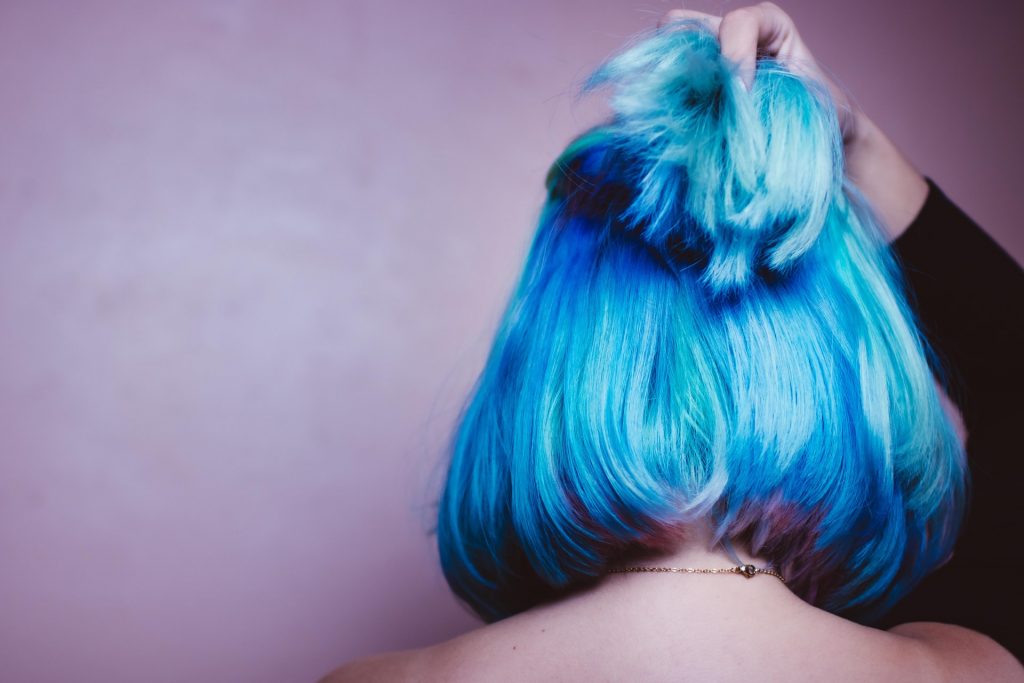While covering grey hair is a task in its own right the difficulty level increases much more when the scalp has its own issues. Skin diseases are often associated with the face and hands but less is written about how to handle it when it involves the scalp. Dying your hair safely with a sensitive scalp can become quite a painful experience if not handled well.
Now having a scalp with eczema or psoriasis doesn’t have to end your hair dying routine. Following a few precautions will spare you the stinging pain of the chemical reaction. Applying hair dye for a long time can have its own side effects which often lead to a sensitive scalp. Before you try any of the mentioned tips please check with your doctor first. It’ll make sure the scalp is healthy enough to be applied a hair dye on.
Read the tips below to dye your hair safely even if you don’t have any scalp infection, these tricks will minimize the chance of an adverse reaction.
Know Your Hair Dye
You may only see the color result of the hair dye box before dying but now you’ll have to look at the chemicals too. One chemical which shouldn’t miss your inspecting gaze is paraphenylenediamine commonly known as (PPD). This is the most common irritant found in most hair dyes and the biggest culprit in causing scalp infections.
Discuss With Your Stylist
Many people may try to avoid the subject of scalp infection with their stylists but this is nothing to be embarrassed about. Hairstylists have years of experience dealing with many clients and they are pro at dying your hair safely. They often know how to deal with a dye emergency situation better than you do.
Avoid Dye During The Scalp Infection Flareup
If there is a time when it is best to leave the scalp alone it’s when the scalp eczema or psoriasis has flared up. No hair dye or precaution would work at that time and using one could have serious consequences. More than a stylist paying a visit to a dermatologist would be more recommended.
Start With a Test
There is a reason why applying a test spot is recommended on the hair dye box. The first step to dye your hair safely would be to conduct a patch test. If you test a patch first you will know how suitable the dye is for you. Skipping it can be a very dangerous move as the scalp full of infection is not an easy thing to deal with.
Petroleum Jelly is your Friend
To minimize the risk one can apply some serum beforehand. One of the best things to apply as a protector is petroleum jelly as it creates a thick barrier between hair dye and scalp. Also try to keep the brush as far away from the scalp as you can, make sure it doesn’t touch the scalp surface.
Dying the Natural Way
No matter what hair dyes will always possess the risk of causing a skin infection. The only way to make sure it doesn’t happen is by using natural ingredients. The most popular is Henna which can leave a red tint in your hair but you can always minimize it by adding other ingredients. You can add beetroot juice to make it a bit burgundy or add coffee to make it a bit more chocolate brown.
Precautions to Take After Dying Your Hair
A sensitive scalp needs care even after the hair is dyed. You can use the following steps to dye your hair safely and keep your sensitive scalp from reacting.
- Brush your hair extremely gently. Don’t get harsh with untangling the knots.
- Minimize your hair product usage as many of them contain chemicals that will be harsh on your scalp. Hair gels, perfumes, dry shampoos can flare up the infection so don’t use them. Only use dermatologist’s recommended products to keep your skin healthy.
- Loose hairstyles will keep your scalp from straining and this as a result will keep you from feeling uncomfortable.
- Avoid using heating tools until your scalp is completely healed.
- After dying your hair must apply a dermatologist-recommended ointment to soothe the scalp and forehead skin.
Final Thoughts
As tempting as it is to keep trying new hair colors and keep changing your look, it is advised to take a moment to check your scalp. It is best to keep an eye on any change especially if you start feeling way itchier. It most probably will be due to a dry scalp. This may be a sign for something more and setting a doctor’s appointment quickly would be highly recommended. That will prevent it from worsening.
Do let me in the comments below how do you tackle a hair dye emergency and read other articles on this blog.


